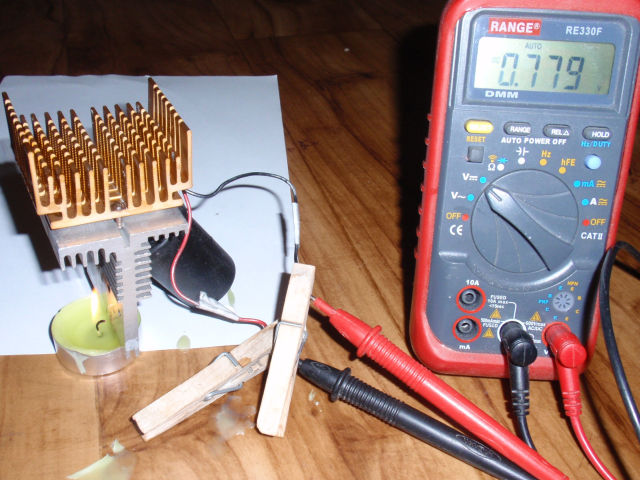Objective:
To design, develop and testing of selected DC-DC booster circuit.
Analysis/Discussion : A voltage step-up is a circuit that increases the voltage. It can be AC/AC, AC/DC, DC/AC or DC/DC. This voltage step-up is a DC/DC adjustable voltage regulator. Usually a
voltage regulator is fed by a higher input than output voltage, for
example 9V IN to 5V OUT. This circuit will take a low voltage (down to
0.7V) and step it up to adjustable 2.7-5.5V. Since it is a regulator,
the output voltage will stay constant regardless input voltage
(0.7-5.5V), as long as output voltage is higher than input. It cannot
step-down, only step-up. Are there any ICs that can do both?
This is a typical circuit for a battery-powered USB-charger, for example single AA batteries (1.5V) to power 5V USB. There are tons of DIYs how to
create that. They are often hard-specified to 5V output power. This
construction can be used in a range of other applications. Many
electronic devices work within 3-5 V and often you want to power them by
low voltage power sources.
Figure 7: Circuit diagram for DC-DC booster converter
List of component used in the circuit:
- IC (DC-DC step-up): MAX757CPA+ - IC, DC/DC UP CONVERTER, DIP8, 757
- Socket (DIP8): TE CONNECTIVITY / AMP - 1-390261-2 - SOCKET IC, DIL, 0.3", 8WAY
- C1 (150µF): PANASONIC - EEUFR1H151, RADIAL, 50V, 150UF
- C2 (100µF): PANASONIC - EEUFC1H101, RADIAL, 50V, 100UF
- C3 (0.1µF): EPCOS - B32529C104J, FILM, 0.1UF, 63V, RADIAL
- C4 (1µF): EPCOS - B32529C105J, FILM, 1UF, 63V, BOXED
- D1 (1N5817): VISHAY FORMERLY I.R. - VS-1N5817, SCHOTTKY, 1A, 20V
- D2 (LED): MULTICOMP - 703-0100, 5MM, RED, 400MCD, 643NM
- L1 (22µH): PANASONIC - ELC16B220L, 22UH, 4.6A, 0R031
- P1R1 (10kΩ): MULTICOMP - MF25 10K, 10K, 0.25W, 1%
- R1&P1R2 (47kΩ): MULTICOMP - MF25 47K, 47K, 0.25W, 1%
- R2 (470Ω): MULTICOMP - MF25 470R, 470R, 0.25W, 1%
- P1(100kΩ): TE CONNECTIVITY / CITEC - CB10LH104M, SIDE, 100K
These item is easily to get in electronic store in Kuala Lumpur. At down below is the specification of Max757 IC.
- Minimum start-up voltage (@10mA load): 1.1V
- Minimum start-up voltage (@300mA load): 1.7V
- Minimum operating voltage (@20mA load): 0.7V
- Input voltage range: -0.3 to +7V
- Output voltage range: 2.7 to 5.5V
- Maximum output load (@input voltage=2V): 200mA@5V, 300mA@3.3V
- Maximum output load (@input voltage=1V): 50mA@5V, 75mA@3.3V
- Efficiency: Max 87% (depends on input voltage and output load
- Quiscent current (@no load, 2V input, 3.3V output): 60µA
- Operating temperature: 0ºC to +70ºC (Using Max75_C__)
Full specification for max757 can be found in this pdf:
http://pdfserv.maximintegrated.com/en/ds/1167.pdf
Figure 8: Pretesting the circuit
I measured the output voltage to be as adjustable as before
(2.77-5.39V). I measured efficiency at 2.5V/340mA in and 4.94V/150mA
out. Converted to watts, (4.94*0.150)/(2.5*0.340)=0.74/0.85W, gives 87%
efficiency. That is exactly according to spec but I got less efficiency
at lower output load, but still expected. For full efficiency you need
better components and a more compact layout. Some connections should not
be more than 5mm according to PDF. There are two free copper lanes in
my layout that can be utilized as common ground, I tried that too but
got exactly the same result. It can also be my 10 year old multi-meter
that is not calibrated.
I also measured the efficiency at
maximum power. I had 3V/900mA in and 4.66V/460mA out. Converted to
watts, (4.66*0.46)/(3*0.9)=2.14/2.7W, gives 79% efficiency.
I
also successfully charged an iPhone 4s with it. It charge at 500mA with
3V in and 4.7V out. Decreasing the input voltage to 2V gives 4.4V out at
300mA (which is quite slow charging). The maximum charge for iPhone is
5V/1A from standard charger.
Result from testing in various input:
2V in => 4.4V*300mA=1.3W out
3V in => 4.7V*500mA=2.35W out
4V in => 4.95V*500mA=2.5W out

Figure 9: Finalize the design of DC-DC booster converter
Conclusion:
This circuit can be determined to use in thermoelectric device charger but the output current is too small to charge the devices. It will gives longer duration of charging.
Reference:
- http://www.instructables.com/id/Battery-Charger-Powered-by-Fire/













